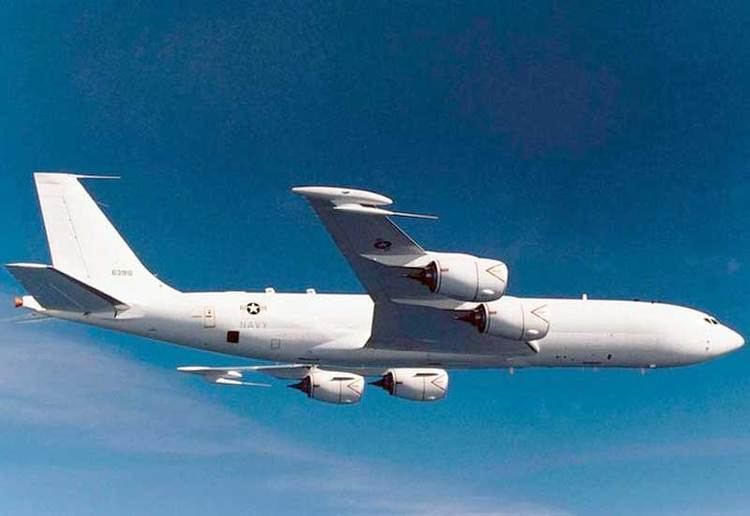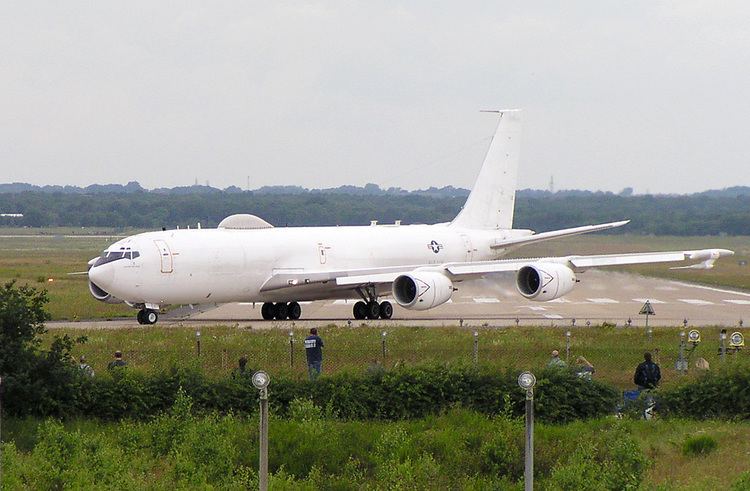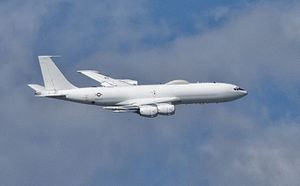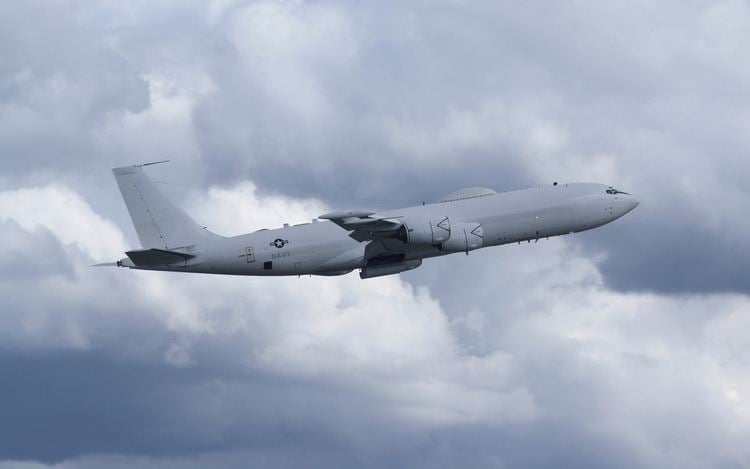Wingspan 45 m Introduced August 1989 First flight February 1987 | Length 47 m Engine type CFM International CFM56 Manufacturer Boeing | |
 | ||
Unit cost 141,700,000–141,700,000 USD (2009) | ||
tacamo boeing e 6 mercury preforming touch and go at castle airport march 12th 2016
The Boeing E-6 Mercury (formerly E-6 Hermes) is an airborne command post and communications relay based on the Boeing 707-320. The original E-6A manufactured by Boeing's defense division entered service with the United States Navy in July 1989, replacing the EC-130Q. It conveyed instructions from the National Command Authority to fleet ballistic missile submarines (see communication with submarines), a mission known as TACAMO (TAke Charge And Move Out). The E-6B model deployed in October 1998 kept this role, but added further command post capabilities and control of land-based missiles and nuclear-armed strategic bombers. The E-6B replaced Air Force EC-135Cs in the "Looking Glass" role, providing command and control of U.S. nuclear forces should ground-based control become inoperable. With production lasting until 1991, the E-6 was the final new derivative of the Boeing 707 to be built.
Contents
- tacamo boeing e 6 mercury preforming touch and go at castle airport march 12th 2016
- Design and development
- Operational history
- Specifications
- References

Design and development

Like the E-3 Sentry airborne warning and control system (AWACS) aircraft, the E-6 is adapted from Boeing's 707-320 airliner. The first E-6 made its maiden flight from Boeing's Renton Factory on 19 February 1987, when it was flown to Boeing Field, Seattle, for fitting of mission avionics. The aircraft was delivered to the Navy for testing on 22 July 1988. The E-6A, which was initially named Hermes, entered service with VQ-3 on 3 August 1989, with the second squadron, VQ-4 receiving its first E-6As in January 1991, allowing the EC-130Q to be phased on in June that year. The E-6A was renamed Mercury in autumn 1991 by request of the US Navy. Sixteen were delivered from 1988 to 1992.

The E-6B is an upgrade to the E-6A. It included a battlestaff area and updated mission equipment. The flight deck systems were later replaced with an off-the-shelf 737 Next Generation cockpit. This greatly increases the situational awareness of the pilot and saves significant cost over the previous custom avionics package. The first E-6B was accepted in December 1997. All 16 E-6A aircraft were modified to the E-6B standard, with the final delivery taking place on 1 December 2006.
Operational history

Codenamed Looking Glass, it is United States Strategic Command (USSTRATCOM)'s Airborne Command Post, designed to take over in case the Global Operations Center (GOC), located at Offutt Air Force Base, Nebraska, is destroyed or incapable of communicating with strategic forces. The term "looking glass" is used because it "mirrors" the abilities of the US Navy to control nuclear forces.
The E-6 fleet is based at Tinker Air Force Base, Oklahoma, and operated by Fleet Air Reconnaissance Squadron 3 (VQ-3) and VQ-4.
Specifications
Data from Navy Fact File
General characteristics
Performance
